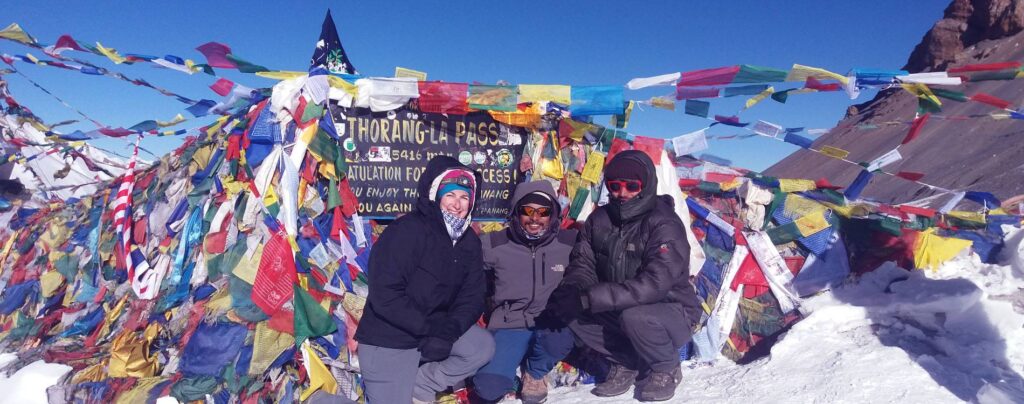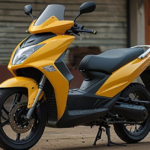Choosing between the Annapurna Circuit Trek and the Everest Base Camp (EBC) Trek is a decision that hinges on various factors including personal preferences, trekking experience, and what you hope to gain from the adventure. Both treks are renowned for their stunning scenery, cultural richness, and challenging terrain, but they offer different experiences that cater to distinct interests and goals.
The Annapurna Circuit Trek Highlight is celebrated for its diverse landscapes and cultural variety. This trek encircles the Annapurna massif, offering trekkers a panoramic journey through lush subtropical forests, terraced fields, and high-altitude deserts. The route also traverses the Thorong La Pass, one of the highest trekking passes in the world at 5,416 meters (17,769 feet). The circuit provides a rich cultural experience as it passes through several traditional villages inhabited by different ethnic groups like the Gurung and Thakali. This trek is often praised for its variety in terms of scenery, cultural interactions, and the gradual acclimatization process, which can be more manageable compared to Everest Base Camp. The Annapurna Circuit also has the advantage of being less crowded than the EBC trek, offering a more serene and immersive trekking experience.
In contrast, the Everest Base Camp Trek is famed for its iconic destination and the allure of trekking in the shadow of the world’s highest peak. This trek takes you through the heart of the Khumbu region, offering breathtaking views of Everest and neighboring peaks like Lhotse and Nuptse. The trail passes through Sherpa villages, such as Namche Bazaar and Tengboche, providing a deep dive into Sherpa culture and the opportunity to witness the traditional lifestyle of the local people. The Everest Base Camp Trek is renowned for its dramatic and awe-inspiring mountain vistas, as well as the sense of accomplishment that comes with reaching the base camp of Everest itself. However, it is worth noting that the EBC trek involves a more abrupt altitude gain, which can make acclimatization more challenging and potentially increase the risk of altitude sickness.
Both treks require a good level of physical fitness and preparation. The Annapurna Circuit is typically considered to be a longer trek with a greater variety of terrain and a slower pace due to its circular route and diverse environments. On the other hand, the Everest Base Camp Trek is shorter but involves steeper ascents and potentially more challenging altitude adjustments.
Ultimately, the choice between the Annapurna Circuit and the Everest Base Camp Trek depends on what you value most in your trekking experience. If you are looking for a trek that combines diverse landscapes with cultural experiences and a less crowded trail, the Annapurna Circuit might be the right choice. If your goal is to experience the grandeur of Everest and immerse yourself in the high-altitude Himalayan environment with direct views of the world’s highest peak, then the Everest Base Camp Trek could be more suitable. Both treks offer their unique rewards and unforgettable experiences, making either choice a remarkable adventure in its own right.
Introduction to the Comparison
When it comes to Himalayan trekking, the Annapurna Circuit Trek and the Everest Base Camp Trek stand out as two of the most iconic and sought-after adventures. Both offer breathtaking scenery, rich cultural experiences, and the challenge of high-altitude trekking. Deciding between these treks involves evaluating various factors including the type of landscapes, cultural encounters, difficulty level, and personal trekking goals. This comparison will delve into what each trek offers, helping potential trekkers understand which adventure aligns best with their preferences and physical capabilities. By examining the key characteristics and experiences of each trek, trekkers can make an informed decision about which journey will best fulfill their expectations and provide the most memorable adventure.
Overview of Annapurna Circuit Trek
The Annapurna Circuit Trek is a classic high-altitude trek that encircles the Annapurna Massif in Nepal. It offers a diverse trekking experience with an impressive range of landscapes, from lush subtropical forests to alpine meadows and stark desert-like conditions in the upper reaches. Spanning approximately 160 to 230 kilometers (100 to 145 miles), depending on the route, the trek typically takes around 15 to 20 days to complete. The circuit is renowned for its cultural richness as it passes through various ethnic villages, including those of the Gurung and Thakali communities. A highlight of the trek is crossing the Thorong La Pass, one of the highest trekking passes in the world at 5,416 meters (17,769 feet). The Annapurna Circuit offers a relatively gradual ascent, allowing trekkers to acclimatize well and enjoy a comprehensive Himalayan trekking experience.
Overview of Everest Base Camp Trek
The Everest Base Camp (EBC) Trek is a legendary journey that leads trekkers to the base camp of the world’s highest peak, Mount Everest. Covering approximately 130 to 160 kilometers (80 to 100 miles) round trip, this trek generally takes about 12 to 14 days. The route takes trekkers through the Khumbu region, providing spectacular views of Everest and neighboring peaks such as Lhotse and Nuptse. The trek begins in Lukla and passes through key Sherpa villages like Namche Bazaar and Tengboche, offering insights into Sherpa culture and Buddhist traditions. The ultimate goal is to reach Everest Base Camp at 5,364 meters (17,598 feet), where trekkers can marvel at the sheer scale of Everest and its surrounding peaks. The EBC Trek is known for its dramatic mountain vistas and is often considered a bucket-list adventure for avid trekkers.
Scenic Highlights of Each Trek
Both the Annapurna Circuit Trek and the Everest Base Camp Trek offer stunning scenery, but in distinct ways. The Annapurna Circuit presents a wide range of landscapes, from verdant terraced fields and dense forests to high-altitude deserts and breathtaking mountain views. Trekkers experience the diversity of the Himalayas as they traverse through different climatic zones, including the Annapurna and Dhaulagiri ranges. The circuit also features striking views of Annapurna, Machapuchare, and Manaslu.
The Everest Base Camp Trek, on the other hand, is renowned for its awe-inspiring mountain vistas and close-up views of Everest, the highest peak in the world. The trek offers unparalleled views of Everest and other towering peaks, including Lhotse and Nuptse. The route also provides a dramatic approach to Everest, with stunning panoramas of the Khumbu Icefall and the majestic south face of the mountain. Both treks offer unique scenic rewards, with the Annapurna Circuit providing a variety of landscapes and the EBC Trek delivering iconic mountain vistas.
Difficulty Levels: Trekking Experience Required
The difficulty level of the Annapurna Circuit Trek Itinerary and the Everest Base Camp Trek varies, reflecting the unique challenges of each route. The Annapurna Circuit is known for its diverse terrain and extended duration, making it a moderately challenging trek. It requires good physical fitness and stamina, but its gradual ascent allows for better acclimatization and adjustment to the altitude. The trek’s length and varying conditions can be demanding, but the pace is generally manageable for those with reasonable trekking experience.
The Everest Base Camp Trek is shorter in duration but involves more rapid altitude gain, which can make acclimatization more challenging. The trek demands a high level of fitness and the ability to handle steep ascents and potentially harsh weather conditions. The high altitude increases the risk of altitude sickness, making preparation and acclimatization strategies critical. While both treks require physical readiness, the EBC Trek’s more abrupt altitude changes present a greater challenge for trekkers compared to the Annapurna Circuit.
Duration and Itinerary Differences
The Annapurna Circuit Trek and the Everest Base Camp Trek differ significantly in their duration and itineraries, reflecting their distinct routes and terrain. The Annapurna Circuit typically spans between 15 to 20 days, depending on the specific route and pace. The itinerary generally includes a circuit around the Annapurna massif, with varied altitudes and multiple acclimatization days built into the schedule. This allows trekkers to gradually ascend and adapt to the changing environments, including a significant crossing of the Thorong La Pass. The circuit provides ample time to explore diverse landscapes and cultural sites along the way.
In contrast, the Everest Base Camp Trek is shorter, usually completed in about 12 to 14 days. The trek focuses on a round-trip journey from Lukla to Everest Base Camp and back. The itinerary involves a more direct ascent with fewer acclimatization days compared to the Annapurna Circuit. The trek includes key stops such as Namche Bazaar and Tengboche, which offer opportunities to acclimatize and experience Sherpa culture. While the Everest Base Camp Trek is shorter in duration, it involves more rapid altitude gain, making it more intense in terms of elevation changes.
Cost Comparisons: Budgeting for Each Trek
When budgeting for the Annapurna Circuit Trek versus the Everest Base Camp Trek, there are several cost factors to consider. The Annapurna Circuit tends to be more budget-friendly overall. Costs include permits, accommodation, food, and transportation. The Annapurna Circuit requires permits such as the Annapurna Conservation Area Permit (ACAP) and the Trekkers’ Information Management System (TIMS) card. Accommodation and food prices on the Annapurna Circuit are generally lower compared to the Everest region, partly due to less commercialization.
On the other hand, the Everest Base Camp Trek is often more expensive. The cost includes permits such as the Sagarmatha National Park Entry Permit and TIMS card, and transportation to Lukla, which involves a costly flight. The Everest region is more tourist-heavy, leading to higher prices for accommodation and food. Additionally, the cost of hiring local guides or porters and other logistical expenses can add to the overall budget. Both treks require careful financial planning, but the Everest Base Camp Trek generally entails higher costs due to the logistics and higher prices in the Khumbu region.
Accommodation Options on Both Trails
Accommodation options on the Annapurna Circuit and Everest Base Camp treks vary significantly, reflecting their distinct regions and levels of development. On the Annapurna Circuit, trekkers stay in a range of teahouses and guesthouses that offer basic amenities. These establishments provide a variety of room options, often with shared facilities. In lower altitudes, accommodation is relatively comfortable, with private rooms available in some areas. As the trek ascends, the quality of lodging can become more basic, especially at higher elevations near Thorong La Pass.
In contrast, the Everest Base Camp Trek features more standardized accommodation, particularly in the popular trekking hubs of Namche Bazaar and Lukla. The lodges and guesthouses in these areas are generally well-equipped, offering comfortable rooms and more extensive facilities. As trekkers move higher towards Everest Base Camp, accommodations are more basic, with fewer options for private rooms and shared facilities becoming more common. Despite the higher standard of lodges in the Khumbu region, accommodation in the Everest Base Camp area remains relatively simple compared to lower altitudes.
Cultural Experiences: Local Engagement
Both the Annapurna Circuit Trek and the Everest Base Camp Trek offer rich cultural experiences, though they highlight different aspects of Himalayan culture. The Annapurna Circuit provides exposure to a variety of ethnic groups, including the Gurung, Thakali, and Manangi communities. Trekkers encounter traditional villages with unique cultural practices, temples, and monasteries. The circuit offers a broader cultural landscape, showcasing the diversity of Nepali society and providing opportunities to interact with local people through homestays and cultural festivities.
The Everest Base Camp Trek primarily immerses trekkers in Sherpa culture, with key stops in villages like Namche Bazaar, Tengboche, and Dingboche. The trek highlights the Sherpas’ unique way of life, their Buddhist traditions, and their role in mountaineering history. Visitors can experience Sherpa hospitality, visit monasteries such as the Tengboche Monastery, and learn about local customs and practices. The focus is more concentrated on the Sherpa community and their mountain heritage, offering a deep dive into the cultural and spiritual aspects of the Everest region.
Best Seasons for Each Trek
The timing of your trek can greatly impact your experience, with both the Annapurna Circuit and Everest Base Camp Treks best undertaken during specific seasons. For the Annapurna Circuit, the optimal trekking seasons are pre-monsoon (spring) from late March to May and post-monsoon (autumn) from late September to November. During these periods, the weather is generally stable, with clear skies and moderate temperatures, providing the best conditions for trekking and enjoying the diverse landscapes.
The Everest Base Camp Trek also benefits from trekking during the spring (March to May) and autumn (September to November). These seasons offer clear views of Everest and surrounding peaks, as well as relatively stable weather conditions. Spring provides the added advantage of blooming rhododendrons and warmer temperatures, while autumn offers crisp air and stunning visibility. Winter trekking is possible but challenging due to cold temperatures and snow, while the monsoon season (June to August) brings heavy rains and potential trail closures, making it less ideal for trekking.
Altitude Considerations and Acclimatization
Altitude considerations are crucial when choosing between the Short Annapurna Circuit Trek and the Everest Base Camp Trek, as both present distinct challenges. The Annapurna Circuit Trek features a gradual ascent, which aids in acclimatization. Trekkers ascend slowly through diverse elevations, from lower altitudes around 800 meters (2,625 feet) in places like Besisahar to the Thorong La Pass at 5,416 meters (17,769 feet). The circuit’s longer duration and varied terrain offer ample time for acclimatization, reducing the risk of altitude sickness.
In contrast, the Everest Base Camp Trek involves a more rapid ascent to high altitudes, which can increase the risk of altitude sickness. The trek starts in Lukla at 2,860 meters (9,383 feet) and reaches Everest Base Camp at 5,364 meters (17,598 feet) relatively quickly. The itinerary includes fewer acclimatization days, with the majority of altitude gain occurring in a shorter time frame. This makes acclimatization more challenging, and trekkers must be vigilant about recognizing symptoms of altitude sickness and adhering to acclimatization protocols to ensure safety.
Personal Experiences and Testimonials
Personal experiences and testimonials provide valuable insights into the Annapurna Circuit and Everest Base Camp Treks. Trekkers who choose the Annapurna Circuit often praise its diverse landscapes and the gradual acclimatization process, highlighting the scenic variety from lush valleys to high-altitude deserts. Many appreciate the cultural immersion, including interactions with different ethnic groups and the chance to explore various traditional villages.
In contrast, Everest Base Camp trekkers frequently recount the thrill of being in the shadow of the world’s highest peak. Testimonials often emphasize the awe-inspiring views of Everest and other towering mountains, as well as the unique Sherpa culture experienced along the route. The sense of accomplishment upon reaching Everest Base Camp is a common highlight, though some mention the physical challenge posed by the rapid altitude gain. Both treks offer unique and rewarding experiences, but personal preferences regarding scenery, culture, and challenge will influence the choice.
Accessibility and Transportation
Accessibility and transportation are important factors when deciding between the Annapurna Circuit and Everest Base Camp Treks. The Annapurna Circuit starts from Besisahar, which is accessible by road from Kathmandu. Trekkers can either take a local bus or hire a private vehicle to reach the starting point of the trek. The trek’s loop design allows for a return to the same area or other transport options back to Kathmandu, making logistical planning relatively straightforward.
The Everest Base Camp Trek begins with a flight from Kathmandu to Lukla, a small mountain airport with a notoriously short and challenging runway. The flight is often subject to weather conditions, which can occasionally cause delays. Once in Lukla, trekkers proceed on foot through the Khumbu region, with transportation primarily consisting of local trekking routes. The accessibility to Lukla can be a significant factor in planning, as flight delays or cancellations may impact the trek’s schedule.
Recommended Gear for Each Trek
Gear recommendations for the Annapurna Circuit Trek and the Everest Base Camp Trek vary based on the specific needs and conditions of each trek. For the Annapurna Circuit, essential gear includes a versatile set of clothing suitable for changing weather conditions, including layers for warmth and waterproof outerwear. Trekking poles are recommended for stability, and good-quality hiking boots are crucial for navigating diverse terrain. A sleeping bag rated for cold temperatures and a comfortable backpack are also important, given the trek’s varied elevations and potential for cold nights.
The Everest Base Camp Trek requires similar gear but with a focus on high-altitude protection. Warm clothing layers, including a down jacket and thermal base layers, are necessary due to the colder temperatures at higher altitudes. High-quality trekking boots, poles, and a well-fitted backpack are essential, as is a sleeping bag rated for extreme cold. Additionally, altitude-specific gear such as a good quality sunhat and UV-protective sunglasses are vital for protecting against intense sunlight and glare.
Conclusion: Making the Right Choice
Choosing between the Annapurna Circuit Trek and the Everest Base Camp Trek ultimately depends on personal preferences, physical readiness, and the type of experience desired. The Annapurna Circuit offers a longer, more gradual ascent with diverse landscapes and cultural encounters, making it suitable for those who enjoy a varied trekking experience and ample time for acclimatization. It provides a comprehensive view of Himalayan terrain and cultural diversity.
The Everest Base Camp Trek, with its iconic destination and dramatic mountain vistas, appeals to those seeking the thrill of trekking in the high Himalayas and experiencing Sherpa culture up close. The challenge of reaching Everest Base Camp and the stunning views of the world’s highest peak provide a memorable adventure, though it involves more rapid altitude gains.
Both treks offer exceptional experiences and require careful preparation. Considering factors such as altitude acclimatization, personal fitness levels, and the type of cultural and scenic experiences desired will guide trekkers in making the right choice for their Himalayan adventure.







